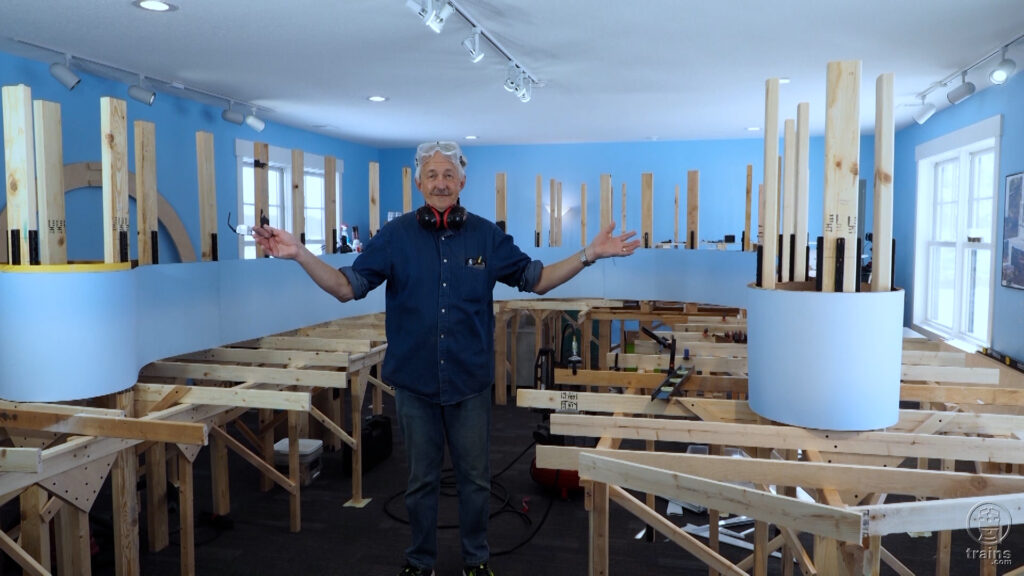
Bound and determined to build it better than his previous layout, Gerry walks through his evolved process for handling the installation of a hardboard backdrop. Plenty of neat tips and trick can be found in this and other episodes of Back on Track, an exclusive Trains.com series! […]
Read More…
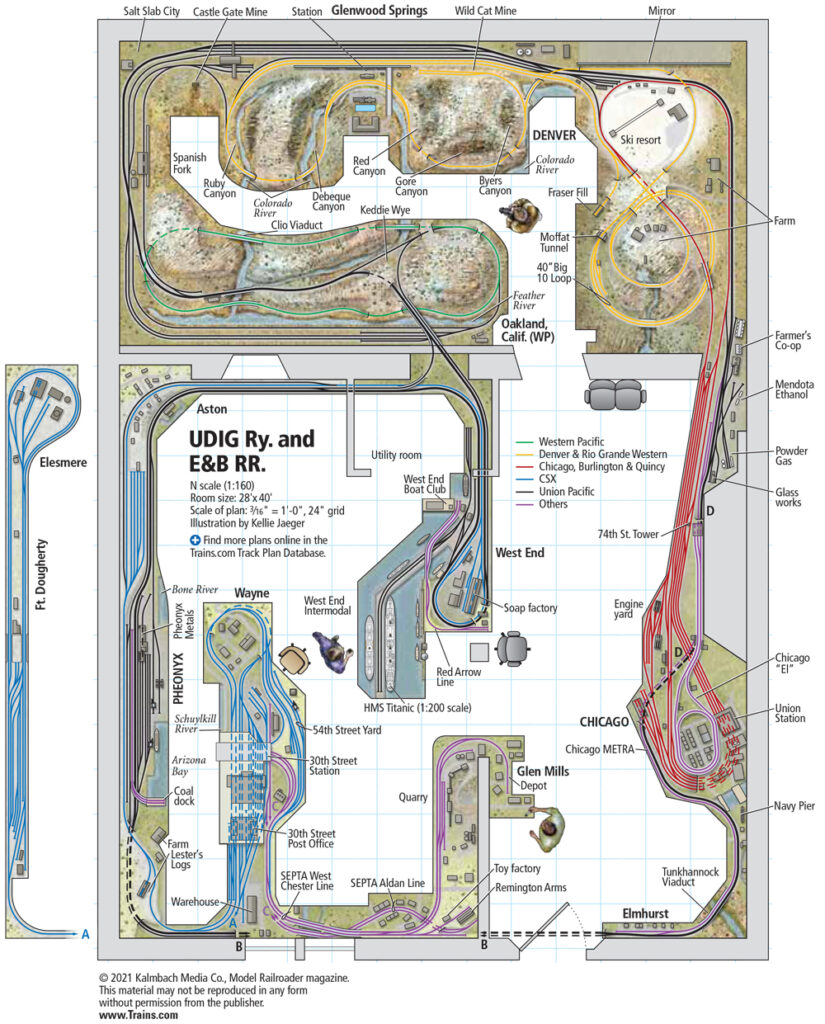
Facts & features Name: Uncle Dave’s Indoor Garden Ry. (UDIG) and East & Beyond (E&B) Scale: N (1:160) Size: 28 x 40 feet Theme: Route of the California Zephyr Locale: California to Chicago and points east Era: 1960-1999 Style: walk-in Mainline run: 380 feet Minimum radius: 21” (UDIG), 15” (E&B) Minimum turnout: no. 8 Maximum […]
Read More…
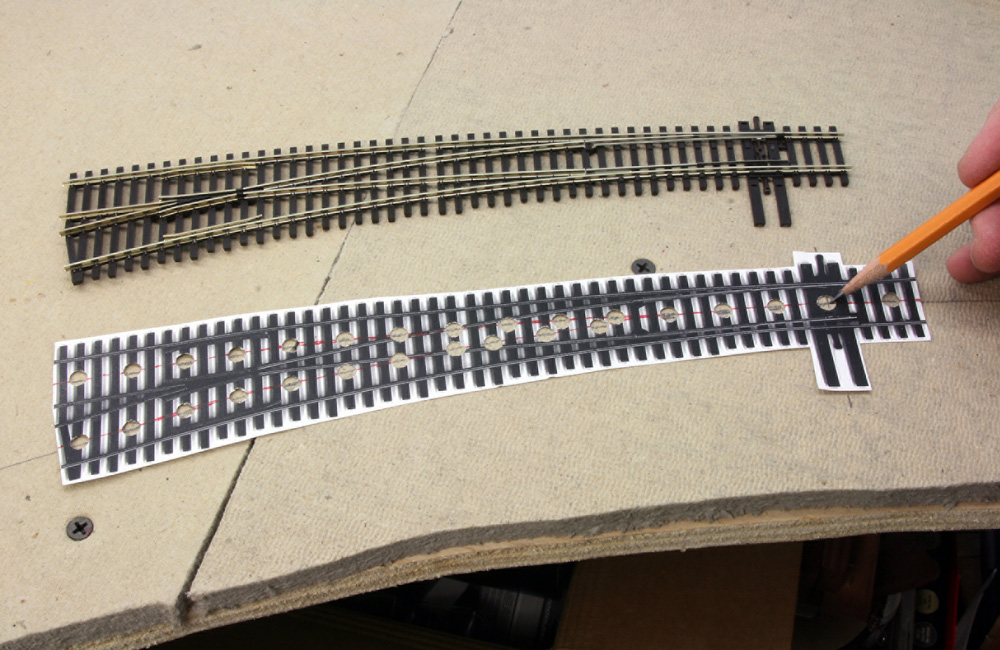
How do I use paper turnout templates? Q: I’m looking to get back into model railroading and I’m having a hard time deciding on a layout. I’ve confused myself by looking at hundreds of plans, drawing possible layouts and trying design software. I would like to be able to use paper track templates, but I […]
Read More…
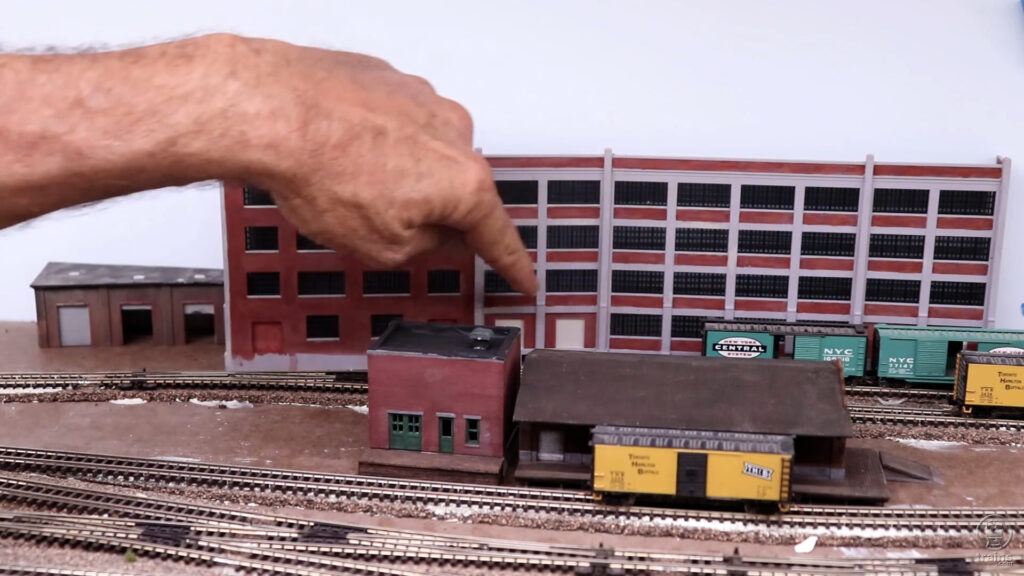
Steve “Regular Guy” Brown focuses on a kitbashed building that represents a signature structure on his N scale depiction of the Winston-Salem Southbound Railway. Explore the various techniques he used to form and fit this key component of the layout scene. […]
Read More…

Steve “Regular Guy” Brown focuses on a kitbashed building that represents a signature structure on his N scale depiction of the Winston-Salem Southbound Railway. Explore the various techniques he used to form and fit this key component of the layout scene. […]
Read More…
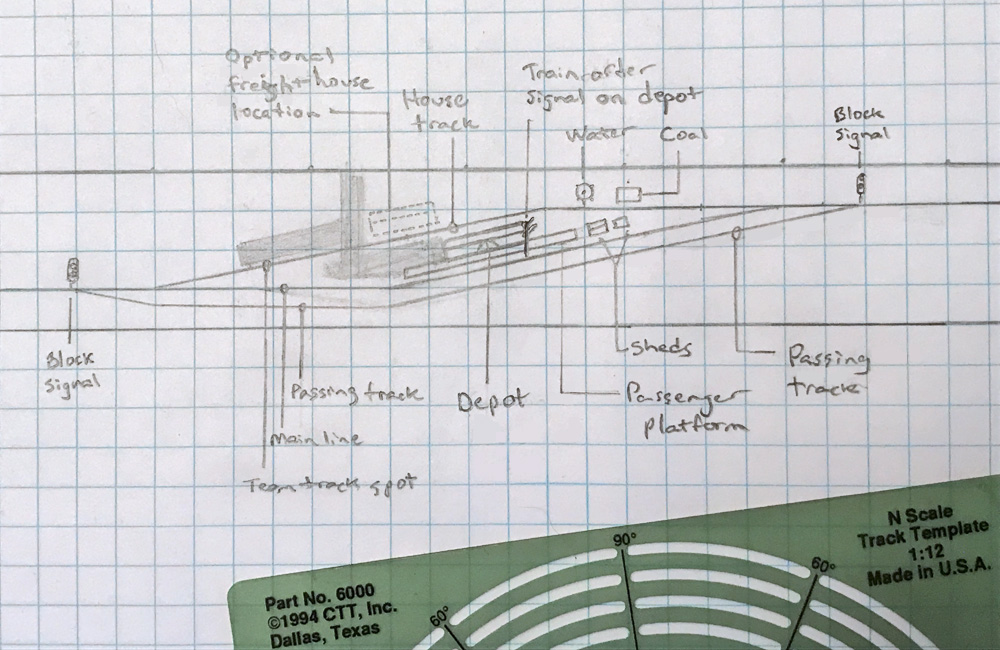
If you ask a layman to define a train station, they’ll describe a big building where people buy tickets and wait to board passenger trains. A slightly more knowledgeable person might also mention the presence of freight and baggage facilities and railroad offices. But when we talk about railroad operations – whether of the full-size […]
Read More…
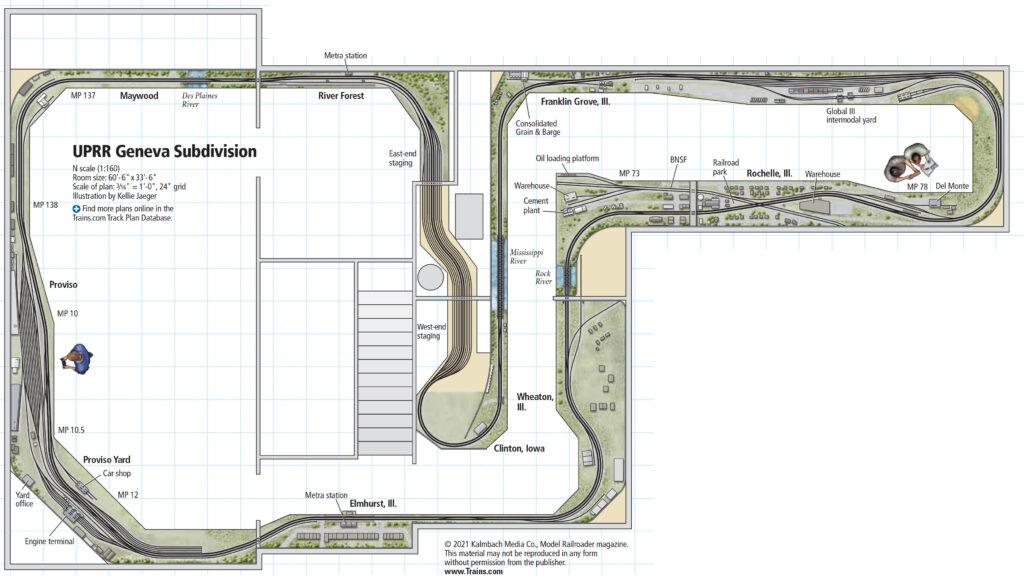
The layout at a glance Name: UPRR Geneva Subdivision Scale: N (1:160) Size: 60′-6″ x 33′-6″ Prototype: Union Pacific Locale: northern Illinois Era: 2014 Style: walkaround Mainline run: 250 feet Minimum radius: 36″ Turnouts: no. 10 (main), no. 8 (secondary and yards) Maximum grade: 0.5 percent Benchwork: open grid Height: 55″ Roadbed: 3⁄16″ cork (main), […]
Read More…
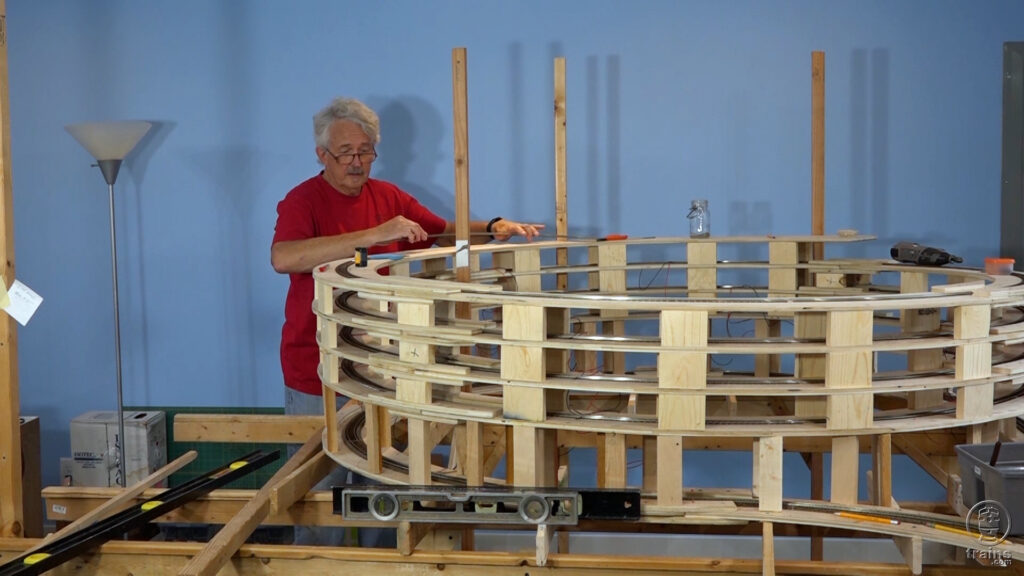
As the world and Gerry’s helix continues to turn, he deals with its ups and downs. See how he works to avoid wavering levels on each turn of the helix. And you won’t want to miss the first running train on the new layout. […]
Read More…

As the world and Gerry’s helix continues to turn, he deals with its ups and downs. See how he works to avoid wavering levels on each turn of the helix. And you won’t want to miss the first running train on the new layout. […]
Read More…
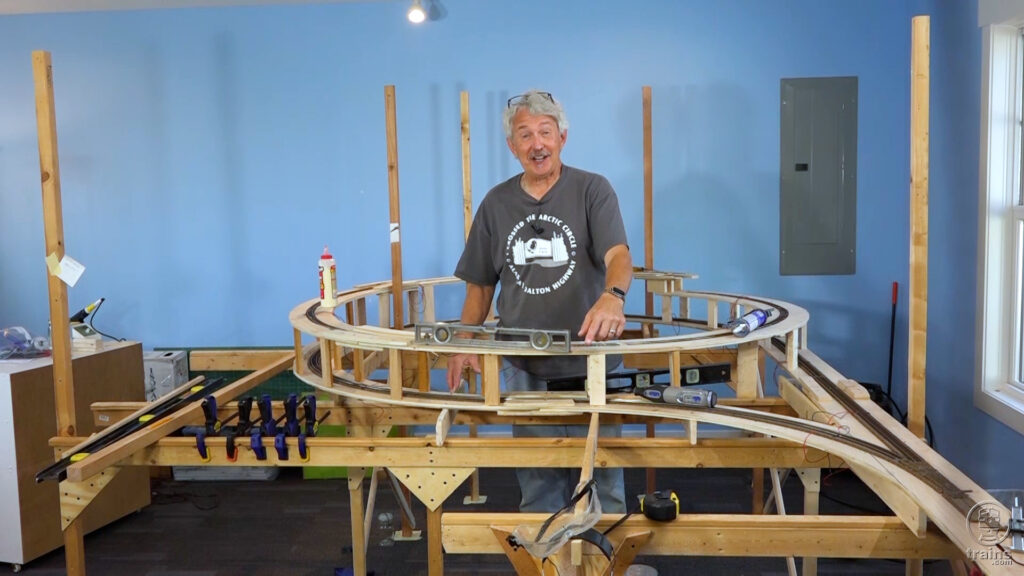
Even with a little help from a friend, host Gerry Leone still struggles with benchwork construction. But after setting joists straight and level, he jumps right into raising the grade along the helix. Discover a few new track tips and tricks along the way. […]
Read More…

Even with a little help from a friend, host Gerry Leone still struggles with benchwork construction. But after setting joists straight and level, he jumps right into raising the grade along the helix. Discover a few new track tips and tricks along the way. […]
Read More…
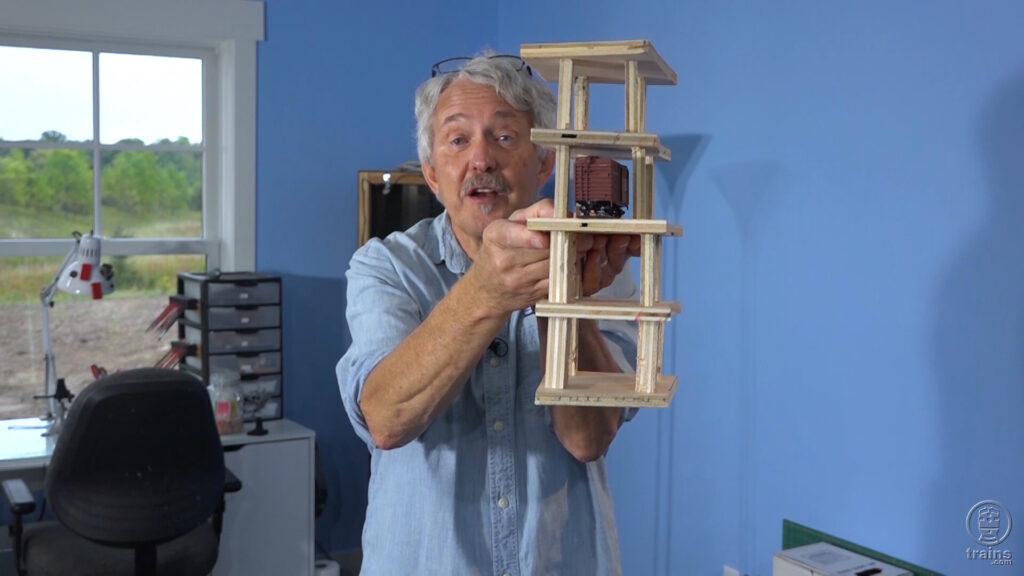
With design issues behind him, Gerry begins building the components of a four-turn helix. Even though math is involved in this stage, our host is up to the task. And he’s clever enough to use and share a number of helpful resources that make the process easy to understand and follow. […]
Read More…









